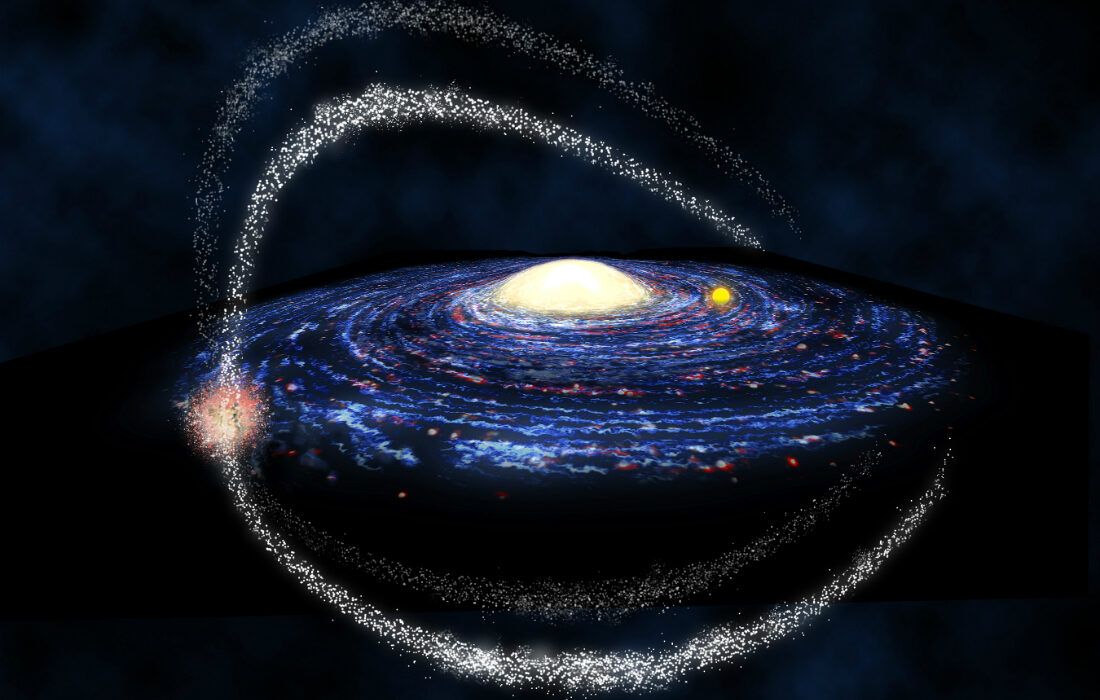In the vast expanse of the universe, celestial bodies dance through space, sometimes in intricate choreography that can shape the destiny of galaxies. One such cosmic ballet is playing out between our home galaxy, the Milky Way, and its neighboring giant, the Andromeda Galaxy. The stage for this dramatic interaction is set over a timeframe spanning billions of years.
Picture this: two colossal galaxies hurtling towards each other at unimaginable speeds, destined to collide and merge into a single massive entity dubbed “Milkomeda.
” While scientists have long believed in this cosmic showdown, recent analyses have thrown a fascinating twist into the mix. It appears that a seemingly insignificant player, a dwarf galaxy known as the Large Magellanic Cloud, may hold the key to altering this predicted fate.
Astrophysicists have been captivated by this unfolding saga. Elena D’Onghia from the University of Wisconsin-Madison remarks on the newfound significance of the Large Magellanic Cloud, stating, “
It’s not just a minor satellite but it’s a major player in determining the future course of events.
”
A century ago, astronomer Vesto Slipher noted Andromeda’s gradual approach towards our Milky Way. Fast forward to modern times with advanced telescopes like NASA’s Hubble and ESA’s Gaia providing precise measurements on galactic movements. These observations led to alarming predictions of an inevitable collision between Andromeda and our galaxy.
However, recent studies shed light on how previous analyses overlooked crucial factors like the Large Magellanic Cloud’s gravitational influence. Till Sawala from the University of Helsinki explains how newer data has revealed surprising details about this dwarf galaxy’s mass and impact on altering trajectories.
Through meticulous simulations encompassing various galactic configurations over billions of years, scientists discovered intriguing dynamics at play. The Large Magellanic Cloud emerges as a pivotal force that could potentially divert or delay the impending collision between the Milky Way and Andromeda.
Sawala elaborates on their findings: “
The gravity of the Large Magellanic Cloud introduces sideways momentum to steer clear of disaster in many scenarios.” Yet, amidst this cosmic reprieve lies another inevitable outcome – our Milky Way is anticipated to engulf its savior in approximately 2 billion years.
Not all experts are convinced by these new revelations though. Sangmo Tony Sohn from STScI expresses skepticism about altering merger outcomes based on updated data interpretations. He maintains his belief in a higher likelihood of galactic mergers due to combined mass considerations.
As researchers continue refining their models and technologies over upcoming years, consensus may eventually be reached regarding these celestial collisions. Factors like dark matter distribution within galaxies will also play crucial roles in shaping these astronomical destinies.
While Earthly inhabitants might not witness these grand cosmic dramas unfold directly due to distant timelines involved, pondering such monumental events sparks awe and wonder about our place in an ever-evolving universe.
In conclusion, as we gaze up at night skies teeming with mysteries beyond comprehension, we are reminded that even galaxies millions of light-years away are engaged in an intricate dance that will shape their shared destinies for eons to come.

